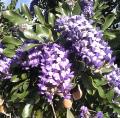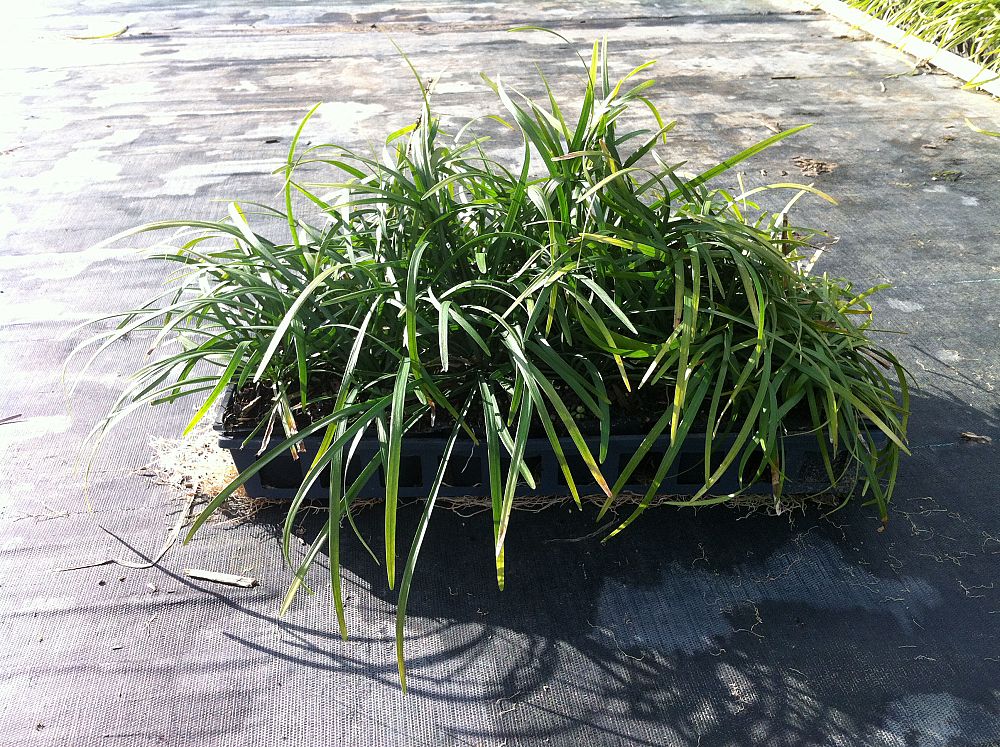
DMT-Nexus member
Posts: 267 Joined: 09-Mar-2012 Last visit: 20-Dec-2025
|
Hey, I came across this article today and didn't see it posted anywhere here yet. It doesn't go too into detail, but describes some plants that are able to naturally filter benzene, xylene, acetone, etc. from the air. Many of us use these toxic, volatile materials that evaporate into the air. Good ventilation is key, but I've still wondered before how healthy our practice is. I'll definitely be picking a few of these up before my next extraction. Quote:Most people have indoor plants around them in day-to-day life, whether it’s in the home or in the workplace. We know that plants provide us a valuable service by converting carbon dioxide to oxygen through the photosynthesis process, but plants can also help improve the general air quality in indoor environments by absorbing harmful gases and by improving the oxygen we breathe by literally cleaning the air around them.
Not only are plants such as spider plants and bamboo beautiful, they work to keep us healthy every second they exist!
In the 80’s, NASA published a study that gives definitive proof that indoor plants have a positive effect on our indoor environment. It’s been gaining new attention in recent years due to an increased awareness of how to better improve our environment’s quality. Over a two year period NASA, along with Associated Landscape Contractors of America (ALCA), studied the effects of different types of plants when brought indoors vs. having no plants at all.
The scientists found that ornamental plants help fight Sick Building Syndrome, which the EPA describes as, “…building occupants experience acute health and comfort effects that appear to be linked to time spent in a building.” The study evaluated around a dozen different types of plants and definitively found that they play an important role in air purification and revitalization by absorbing the pollutants in the air that can cause adverse effects on health. In fact, the study found that the indoor plants are so good at removing the toxins from the air that they made the decision to start sending plants into space to help keep astronauts’ air healthy and to provide them with an optimal life support environment.
What are these Dangerous Toxins?
You would think with modern technology and advances in architecture there would be better artificial environments developing right along with them however the opposite is actually true. Buildings are sealed-up more than ever and air quality becomes stagnant. Toxins build up in the building and have no way to escape. This is the air we breathe throughout the day as we work, throughout the night as we sleep.
How do Indoor Plants Keep Us Safe?
According to factoidz.com there are many toxins found in buildings and homes such as “benzene, formaldehyde, acetone, carbon tetra chloride, chloroform, dichlorobenzene, ethyl acetate, methylene chloride, tetrachloroethylene, toluene, trichloroethylene and xylene.” And these are just the most common of the more than 350 toxins found. We can help battle the effects of these pollutants simply by adorning our homes with these natural – and beautiful – air purifying systems. The best place to keep the plants are where we spend most of our time, in living areas and bedrooms.
The NASA study concluded that there were 15 plants that were most effective for removing indoor toxins and some of the plants are better than others for specific chemicals. For example, English Ivy, mums and daisies are extremely effective for removing benzene while bamboo palm and spider plants are great at removing formaldehyde.
The following list contains plants that can be easily found at almost any nursery:
1. Philodendron scandens `oxycardium’, heartleaf philodendron
2. Philodendron domesticum, elephant ear philodendron
3. Dracaena fragrans `Massangeana’, cornstalk dracaena
4. Hedera helix, English ivy
5. Chlorophytum comosum, spider plant
6. Dracaena deremensis `Janet Craig’, Janet Craig dracaena
7. Dracaena deremensis `Warneckii’, Warneck dracaena
8. Ficus benjamina, weeping fig
9. Epipiremnum aureum, golden pothos
10. Spathiphyllum `Mauna Loa’, peace lily
11. Philodendron selloum, selloum philodendron
12. Aglaonema modestum, Chinese evergreen
13. Chamaedorea sefritzii, bamboo or reed palm
14. Sansevieria trifasciata, snake plant
15. Dracaena marginata , red-edged dracaena
Interestingly enough, houseplants have grown with our needs over the years and originated from tropical areas where they grew in dense populations under a canopy of other tropical plants. The species that thrive best in the home are now even more adaptable to an indoor environment and can easily live in low light areas due to their natural species’ qualities.
The evidence is clear: house plants equate better air, decreased pollutants and toxins and a better environment, so ornament your house as much as your heart desires! http://www.wesupportorga...ove-the-air-quality.html
|
|
|
|
|

DMT-Nexus member
Posts: 290 Joined: 15-Jun-2011 Last visit: 01-Jun-2020
|
I was just thinking about this very thing. Thanks for the post All these posts are on behalf of Stimpy, my yellow bullhead. He is an adventurous fish, and I feel his exploits are worth sharing...so much so, I occasionally forget that HE is the one who does these things. Sometimes I get caught in the moment and write of his experiences in the first person; this is a mistake, for I am an upstanding citizen who never does wrong. Stimpy is the degenerate.
|
|
|

DMT-Nexus member

Posts: 1843 Joined: 28-Jun-2012 Last visit: 20-Jul-2021
|
Spathiphyllum (Peace Lilly) are awesome plants. 1) They're incredibly easy to grow 2) They're readily available 3) Relatively inexpensive for a houseplant 4) They "tell" you when they need water, they droop and recover quickly after watering 5) The flowers are beautiful and last for a couple weeks if not longer  wap wearepeople attached the following image(s):  spathiphyllum-mojo.jpg (21kb) downloaded 127 time(s). peacelillyflower.jpg (50kb) downloaded 123 time(s).+ ---- + ---- + ---- + ---- + ---- + ---- + ---- + ---- DMT Nexus Research ---- + ---- + ---- + ---- + ---- + ---- + ---- + ---- +
|
|
|

DMT-Nexus member

Posts: 1843 Joined: 28-Jun-2012 Last visit: 20-Jul-2021
|
And here's the original report as a .pdf file + ---- + ---- + ---- + ---- + ---- + ---- + ---- + ---- DMT Nexus Research ---- + ---- + ---- + ---- + ---- + ---- + ---- + ---- +
|
|
|

DMT-Nexus member
Posts: 115 Joined: 17-May-2014 Last visit: 10-Dec-2022 Location: Everywhere and Nowhere
|
Sometimes... just sometimes I feel like the Nexus is turning into Buzzfeed, and them someone posts the source! 
|
|
|

DMT-Nexus member
Posts: 1903 Joined: 15-Mar-2014 Last visit: 13-Dec-2025
|
These are all great plants! Saw this list a while back.. if NASA gives the okay, than indeed we are dealing with very purifying plants. Thanks for sharing!  'What's going to happen?' 'Something wonderful.'
Skip the manual, now, where's the master switch?
We are interstellar stardust, the re-dox co-factors of existence. Serve the sacred laws of the universe before your time comes to an end. Oh yes, you shall be rewarded.
|
|
|

DMT-Nexus member

Posts: 1843 Joined: 28-Jun-2012 Last visit: 20-Jul-2021
|
isaaczibre wrote:Sometimes... just sometimes I feel like the Nexus is turning into Buzzfeed, and them someone posts the source!  Well, this topic is very pertinent as xylene is very common in extractions of DMT. And in the study, the plants could remove nearly 100% of the chemicals over a 24 hour period.  + ---- + ---- + ---- + ---- + ---- + ---- + ---- + ---- DMT Nexus Research ---- + ---- + ---- + ---- + ---- + ---- + ---- + ---- +
|
|
|

Got Naloxone?
 
Posts: 3240 Joined: 03-Aug-2009 Last visit: 11-Mar-2025 Location: United Police States of America
|
Nice post. Just wanted to note that a number of these are very toxic to pets, in particular cats. But, you just cannot go wrong filling your place with spider plants. Non-toxic to cats (not sure about dogs, but I hope so), cleansing to the air, and once they drop those little daughters, you can put them on new beds of soil and get a bunch of free plants. It's just like cloning weed, but easier! Living cleaner indoors ftw. "But even if nothing lasts and everything is lost, there is still the intrinsic value of the moment. The present moment, ultimately, is more than enough, a gift of grace and unfathomable value, which our friend and lover death paints in stark relief."-Rick Doblin, Ph.D. MAPS President, MAPS Bulletin Vol. XX, No. 1, pg. 2Hyperspace LOVES YOU
|
|
|

DMT-Nexus member
Posts: 267 Joined: 09-Mar-2012 Last visit: 20-Dec-2025
|
Thanks for your inputs! I may not have noticed warnings about pet toxicity if no one said anything. I've fallen in love with a cat a few months ago so that's definitely a priority. There's some cat-friendly lists out there to be google'd. The articles could have used some pictures too, thanks for posting some of peace lily, wearepeople. I've decided to go with these cat-friendly ones, personally: Snake plant - benzene, formaldehyde, xylene, toluene. Also likes humidity, probably going in the bathroom.   Boston fern - xylene, toluene and formaldehyde. Hanging some in my living area.  Lilyturf (Liriope spicata) - formaldehyde, ammonia, xylene and toluene from the air. Going to hang some near my solvent storage.  Broadleaf lady palm - formaldehyde, ammonia, xylene, toluene. I think this one would be the largest, perhaps one in my kitchen/working/living area.  I have a small apartment so I'd like to hang as many as I can to maximize space, maybe I'll get a few spider plants to fill the gaps. 
|